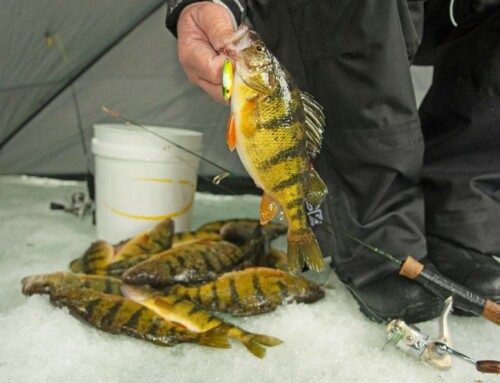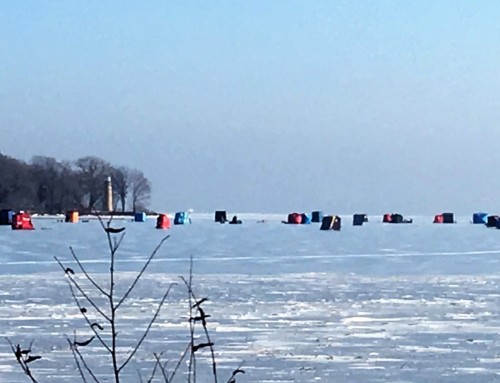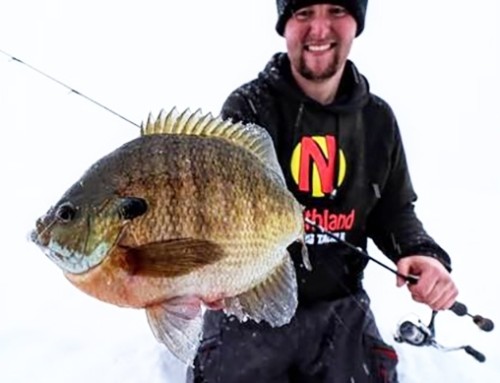By Mark Schram, myfishingpartner.com
The arrival of the first ice marks the beginning of an exciting season for anglers targeting yellow perch on Wisconsin’s Winnebago System. Renowned for its sprawling waters and abundant fish population, the Winnebago System provides the perfect setting for early-ice adventures. With careful planning and the right techniques, anglers can capitalize on the perch bite during this transitional time of year.
Understanding First Ice and Perch Behavior
During the first-ice period, yellow perch are active and eager to feed after the fall cooling cycle. These fish often congregate in large schools and stick to specific depth ranges and structural features. The key to success is locating them early, as their movements can shift with fluctuating ice conditions, fishing traffic, and oxygen levels.
Where to Look: Key Locations for First Ice Perch
Shallow Flats (3–8 Feet of Water)
In the early ice phase, perch often move into shallow flats near weed beds and sandbars. These areas offer abundant food, such as minnows and insects. Look for flats with healthy green weeds, as they provide oxygen and shelter for baitfish.
Some key areas include Asylum Bay (Oshkosh), Miller’s Bay (Oshkosh), and the Big Hole in Fond du Lac for the very first ice.
Tactics for Targeting Early-Ice Perch
- Drilling Patterns
Mobility is crucial during first ice. Begin by drilling a grid of holes across potential areas to cover different depths and structures. Use a fish finder, Livescope, or underwater camera to confirm the presence of perch before committing to a spot. - Dead-Sticking and Jigging
Combine active jigging with a dead-stick rod setup. The jigging rod can call in curious perch, while the dead stick offers a subtle presentation that seals the deal for wary fish. - Light Line and Subtle Movements
Perch are often finicky, so use light monofilament or fluorocarbon lines (2–4 lb. test) and avoid overworking your bait. Tiny twitches often outperform aggressive jigging.
Best Baits and Lures
- Jigs and Spoons
- Tungsten Jigs: Pair with waxworms, spikes, or plastics for a subtle presentation.
- Small Spoons (1/16–1/8 oz.): Gold, silver, or chartreuse spoons tipped with a minnow head are excellent for attracting perch. Purple is another strong choice as it mimics the trout perch, a small baitfish in the Winnebago System.
- Rattling Jigs: In murky water, a rattling jig can help perch locate your bait.
- Live Bait
- Fathead Minnows: Hook them through the dorsal fin for dead-sticking or jigging. Rosie red minnows are always good in the bay earlier in the season
- Waxworms or Spikes: These smaller baits are perfect for finicky fish and work well on small jigs.
- Plastics
- Tiny soft plastics with lifelike action, such as micro-grubs or minnow imitators, are great alternatives to live bait. One of my favorites is the Berkley Whipworms in chartreuse.
Depth and Presentation Adjustments
- Morning Bite: Perch tend to feed shallower (4–6 feet). Stay mobile and focus on weed edges or sandy flats.
- Midday: As the sun rises, move slightly deeper (6-9 feet) to follow the fish. Slow down your presentation. Make sure the ice is safe to venture into deeper water.
Safety Tips for First Ice
First ice offers excellent fishing opportunities, but safety should always be your top priority:
- Test the ice frequently, ensuring it is at least 4 inches thick before venturing out.
- Wear a flotation suit and carry ice picks.
- Avoid areas with current or thin ice, especially near river mouths and bridges.
Closing Thoughts
The Winnebago System’s first ice perch fishing can be incredibly rewarding when you know where to look and how to present your bait. By focusing on key structural areas, using subtle yet effective tactics, and remaining mobile, you’ll maximize your chances of landing a cooler full of jumbo perch. Remember to prioritize safety and enjoy this exciting start to the ice fishing season!
Tight lines!






